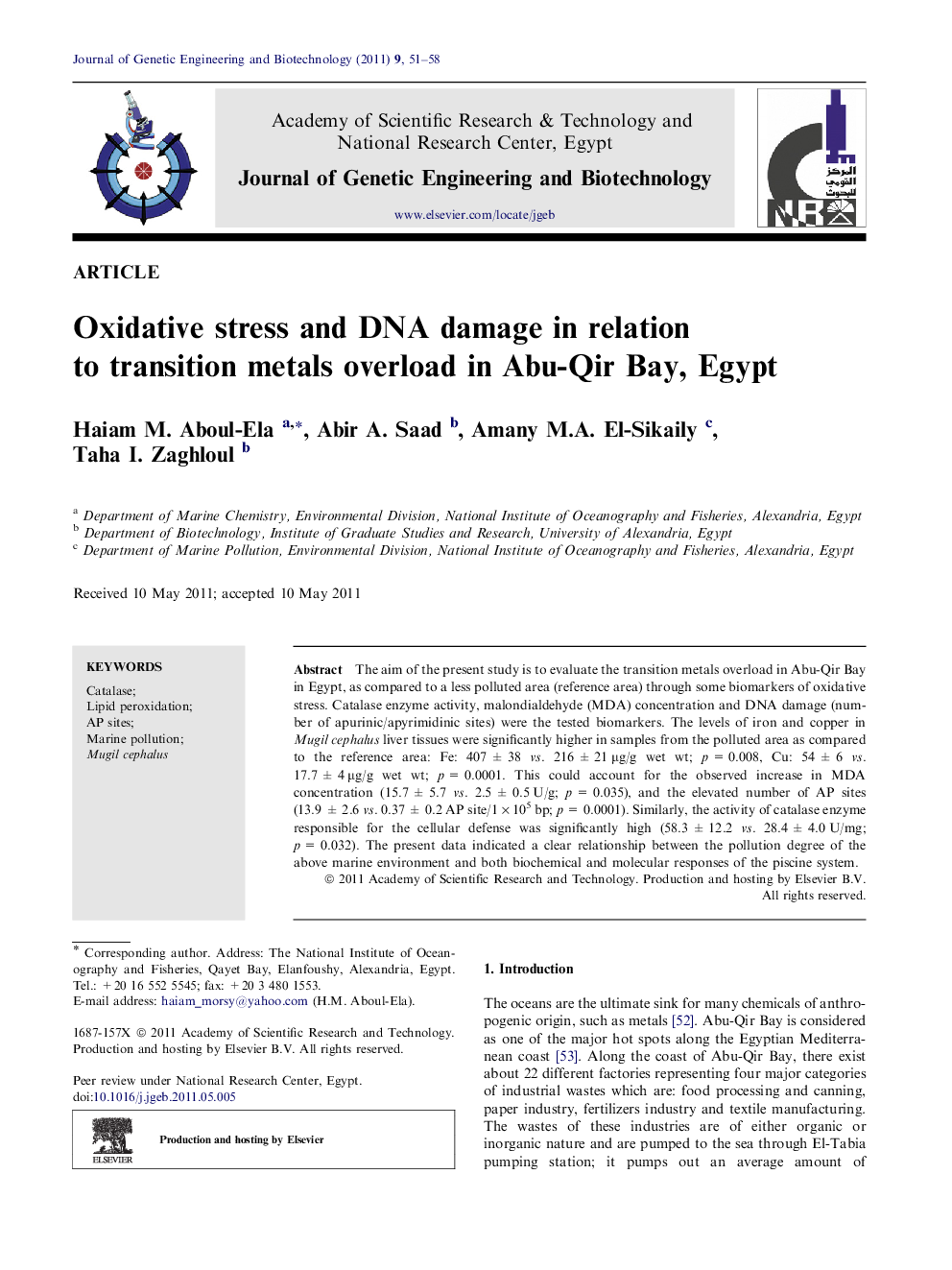| Article ID | Journal | Published Year | Pages | File Type |
|---|---|---|---|---|
| 2087995 | Journal of Genetic Engineering and Biotechnology | 2011 | 8 Pages |
The aim of the present study is to evaluate the transition metals overload in Abu-Qir Bay in Egypt, as compared to a less polluted area (reference area) through some biomarkers of oxidative stress. Catalase enzyme activity, malondialdehyde (MDA) concentration and DNA damage (number of apurinic/apyrimidinic sites) were the tested biomarkers. The levels of iron and copper in Mugil cephalus liver tissues were significantly higher in samples from the polluted area as compared to the reference area: Fe: 407 ± 38 vs. 216 ± 21 μg/g wet wt; p = 0.008, Cu: 54 ± 6 vs. 17.7 ± 4 μg/g wet wt; p = 0.0001. This could account for the observed increase in MDA concentration (15.7 ± 5.7 vs. 2.5 ± 0.5 U/g; p = 0.035), and the elevated number of AP sites (13.9 ± 2.6 vs. 0.37 ± 0.2 AP site/1 × 105 bp; p = 0.0001). Similarly, the activity of catalase enzyme responsible for the cellular defense was significantly high (58.3 ± 12.2 vs. 28.4 ± 4.0 U/mg; p = 0.032). The present data indicated a clear relationship between the pollution degree of the above marine environment and both biochemical and molecular responses of the piscine system.
